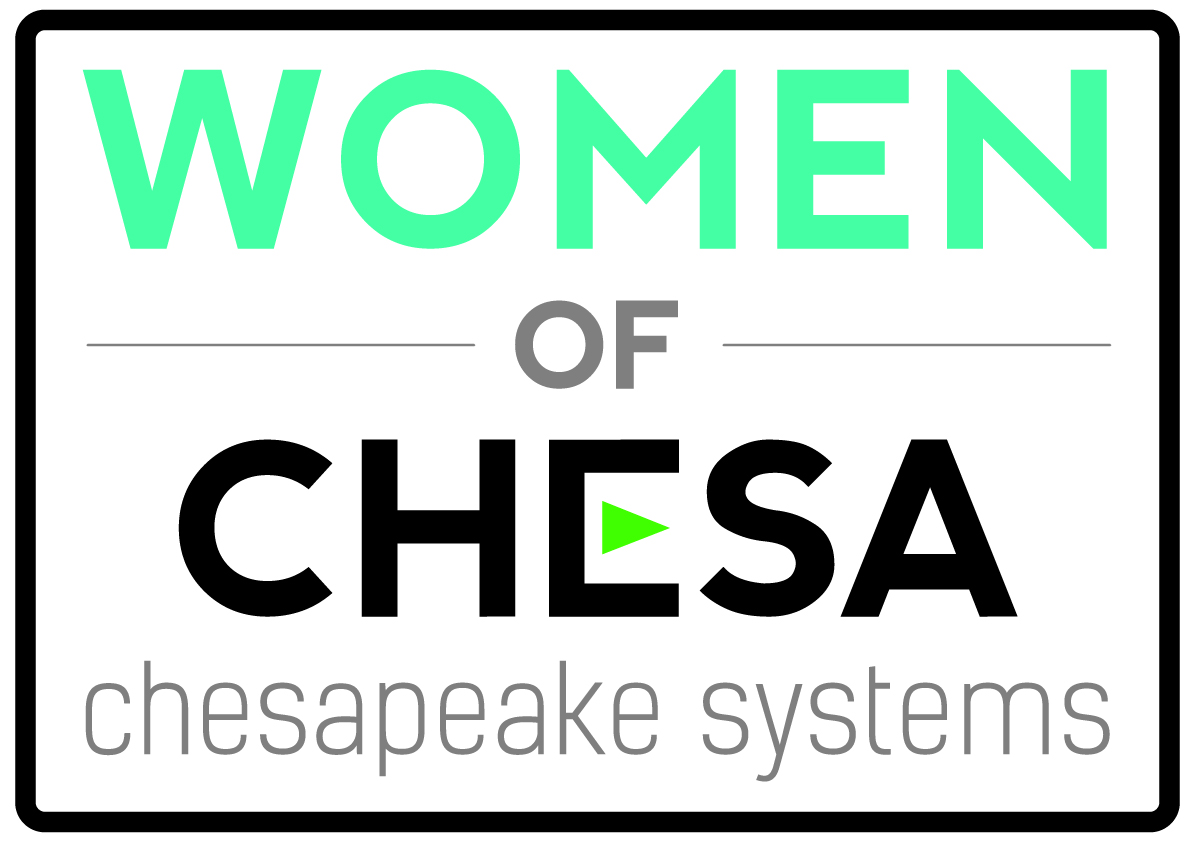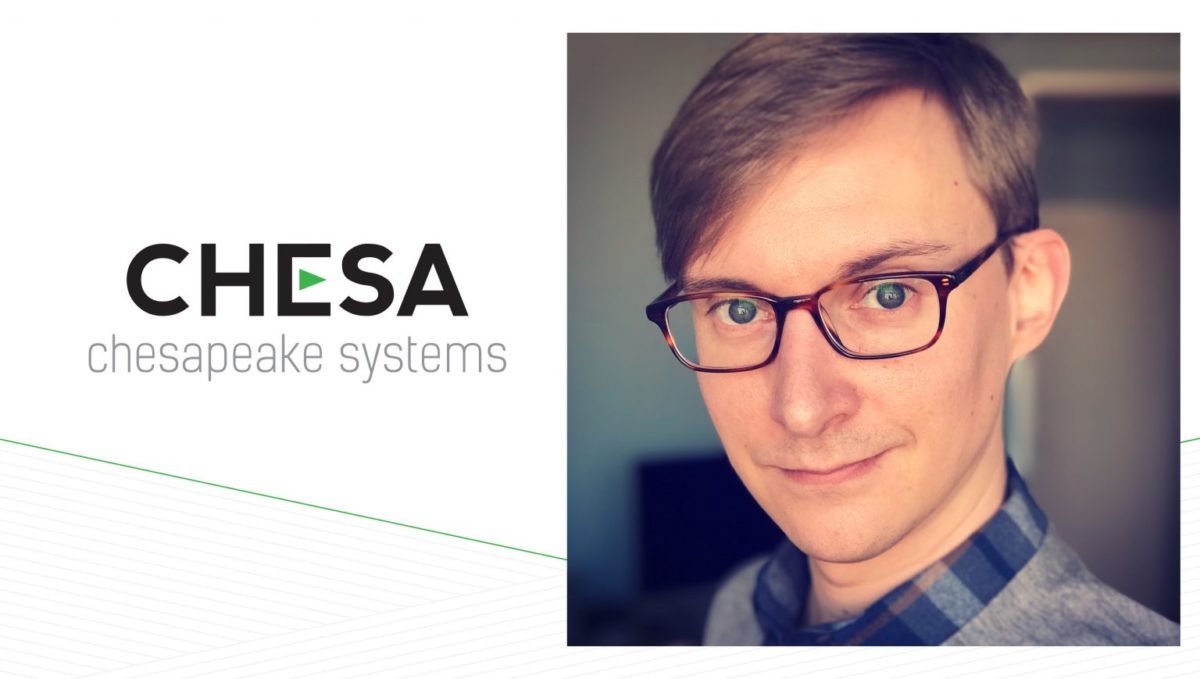The CHESA of today exists because of our team of incredible individuals. I cannot think of anyone from the team who has contributed to more facets of the business than Jessica Mantheiy. This is the result of a CHESA core value she exemplifies: lifelong learning. Numerous women of CHESA have stated she is their mentor. She was kind enough to carve out some time to talk with me about her career and who has mentored her.
Q: How long have you been at CHESA and what was your initial role?
In August 2012, I started at CHESA as an assistant to the Director of Professional Services (Jason Paquin at the time) and started doing service coordination. I was the first Service Coordinator for the engineers.
Q: Can you tell me from there how you arrived at your current position?
When I started, CHESA was a much smaller organization. I started doing management of incoming service requests and installs. I did that for about a year. Sales started to need more day-to-day help and I was asked to support that too. I helped get pricing from vendors and putting quotes together. This was all in tandem with my service coordination work.
In 2014, I was approached to either do sales support or service engineering full time — I chose sales. Jason Paquin offered me the position of Sales Operations Manager, a brand new role for the organization. I stayed in that role for 6 years. I handled sales quoting and worked with Solutions Architects closely and evolved into an unofficial junior solutions architect. In that role, I took the lead to develop fresh processes for sales operations and quoting to help streamline the day-to-day work. That included adding checks and balances for best accuracy that then would flow into procurement properly.
My role continued to grow as CHESA evolved but it was just me for a long time. In January 2019, we were able to hire Sierra O’Connor as an intern. We soon realized we wanted her to stay on full-time and she did. I couldn’t be happier with Sierra — she is an amazing asset to the CHESA team.
In March 2020, I was offered to move over to the Operations and Finance team as Senior Operations Manager. I currently manage the procurement, purchasing, contracts, shipping & receiving processes, assist with finance day-to-day needs, and manage the CRM (Customer Relationship Management software) for our entire company. Concerning our CRM, I had gotten my admin certification for our CRM in 2019 and had already become the primary admin for the Sales department. With our CRM, I implement workflows and automation, having an understanding of our current business needs and processes. I also run point on any support the internal teams need with our CRM.
Q: What has made working at CHESA a place you have not only stayed at but grown?
When I took the position at CHESA, originally, I had been the video editor, production manager, project manager, and in-house IT at a different company. I was recommended by someone who had previously worked at CHESA but had worked together at the same company before CHESA, to apply for an open position. What has made me stay? Although I have a video editing background and was an end-user, I always found IT fascinating. My dad was a satellite engineer and I was exposed early to that. To me, the complexities behind Media IT are captivating. It’s a very different way of looking at video vs being an end-user. Watching the landscape in video change over the past decade, I’m not sure I would have gotten such a front-row view of the revolution at this deep level. Being keenly engaged mentally has kept me here.
Another factor is that over time, the company has allowed me to grow not only my career but as a person by attaining new skills I find I enjoy, and have an actual knack for. For instance, overseeing contracts: I didn’t realize I have a real skill for this. CHESA has allowed things to fail and see what works and what doesn’t so I have been allowed to try new things. Many work and some do not but without having the opportunity to fail, I would not have enjoyed the satisfaction of successes. I’ve also been exposed to what different positions have to offer and grow my interests as a result.
CHESA’s culture is preferable to me for all these reasons over more of a corporate structure at a very large company. I can’t fathom being at a place where my voice is not heard. I get to work with a great bunch of people. I’ve made great friends. The people are a big factor for me.
Q: Who are your mentors?
My parents. They never said I couldn’t do something. As a woman going into video and tech, my dad, growing into a VP at a tech company, has been a great sounding board.
Also, my aunt. She is a very strong independent woman who doesn’t suffer fools as a mentor. She is the “cool” aunt who has been unstoppable in her career. I can tell her what I’m working on or want to work on and she’s always all ears and engaged.
Working alongside Jason Paquin, our CEO, as we have both grown into our roles, seeing his successes, has given me the ability to be inspired and mentored.
Q: I’ve heard 3 separate women say you are a mentor here at CHESA. Why do you think people feel you are a mentor?
Maybe for being very hands-on? I think in my personal career growth, I’ve had to see my errors, enabling me to understand where others are coming from better. I try to apply those experiences in my approach. This helps me advise others on being diplomatic, while also standing up for themselves. I’ve supported others on ways to prepare and also to be heard.
Q: You are a cinema history buff on a deeper level than most. What drew you to this and what do you enjoy about this unique part of history?
I like learning about the history of cinema from the introduction in the late 1800s into the 1940s and the technical capabilities as well as the cultural impact. Also the idea of hundreds of production companies churning out anything to make a profit and how that has evolved to today. A lot of bad movies were bundled into contracts as part of the movie theater package for many decades. The technological evolution as well as having to be creative in the workarounds regarding lighting, for instance, during that time period is fascinating. In a dream job, I would love to be a film archivist.
Q: What are you currently reading?
Not for the faint of heart, but I’m reading The Butchering Art: Joseph Lister’s Quest to Transform the Grisly World of Victorian Medicine by Lindsey Fitzharris. Victorian surgery was quite, literally, theater. Brutal, dirty, no anesthesia, and the risks were, of course, great. People could come and watch your surgery at a theater in London. Joseph Lister came on this scene and presented antiseptic into medicine, as one example. It is gruesome but also a very interesting read on how the practice of medicine changed significantly in this era.
About the Author: Jessica Mantheiy is Senior Operations Manager at CHESA.
Coffee Talk with the Women of CHESA: This Women of CHESA blog series is where we discuss mentorship, what inspires us, our professional journeys, and the challenges we face. Follow us for more stories on Instagram and Twitter @womenofchesa
Have a suggestion for a blog topic? Contact us at womenofchesa@chesa.com

















